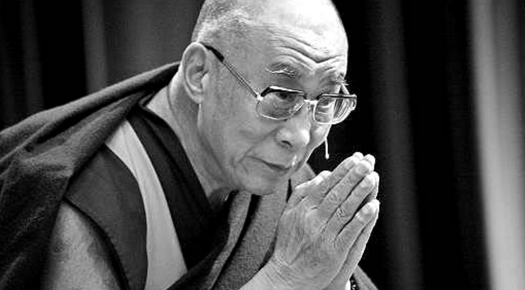
The Dalai Lama is a monk of the Gelug or "Yellow Hat" school of Tibetan Buddhism, the newest of the schools of Tibetan Buddhism founded by Je Tsongkhapa. The 14th and current Dalai Lama is Tenzin Gyatso. At the very young age of two, the child who was named Lhamo Dhondup at that time was recognized as the reincarnation of the previous 13th Dalai Lama, Thubten Gyatso.
Speaking at the European Parliament in France last month, the Dalai Lama argued that anyone committing violence in the name of religion cannot really be called a true believer. That means that not a single violent act is done by the believers because all religions are against violence. This, of course, is a meaningless and tautological statement, like saying that either it will rain tomorrow or it won’t rain. Can we separate the faithful from evil people only because they worship God, Allah, Buddha or some other divinity? That certainly isn’t possible.
History knows many wars and movements conducted against heretics such as the Crusades. The Crusades were a series of religious wars sanctioned by the Roman Catholic Church between the 11th and 16th centuries, especially the campaigns in the Eastern Mediterranean with the aim of capturing Jerusalem from Islamic rule. Crusades were also fought for many other reasons, such as to recapture Christian territory or defend Christians in non-Christian lands, resolve conflict among rival Roman Catholic groups, gain political or territorial advantage, or to combat paganism and heresy. This leads us to the conclusion that much of the violence committed is because of religion and not against it.
Do the “faithful” indulge in violence? Much more often than not says Thomas Merton (1915-1968) in his latest and perhaps his most controversial work. In “Toward a Theology of Resistance” he states, “It is a curious fact that in this present century [the 20th century - ed.] there have been two world wars of unparalleled savagery in which Christians, on both sides, were exhorted to go out and kill each other if not in the name of Christ and faith, then at least in the name of ‘Christian duty’.”
There are many examples which show how holy books preach the good. The Ten Commandments are the excellent example because they include instructions to honor one’s parents, as well as prohibitions against idolatry, blasphemy, murder, adultery, theft, dishonesty and coveting. Different religious groups follow different traditions for interpreting and numbering them. Turn the other cheek is a famous saying from Jesus' words on the Mount and another example that illustrates how the Bible looks at violence and teaches people to respond to aggression without violence.
Holy books, different religions, many religious leaders, all of them are trying to represent themselves in the best way. However, violence in the name of religion or because of the religion is still present among people and it will continue to happen. It looks like the bad publicity is better than no publicity, even when it comes to religion.
Photo Credits: Static Flickr
